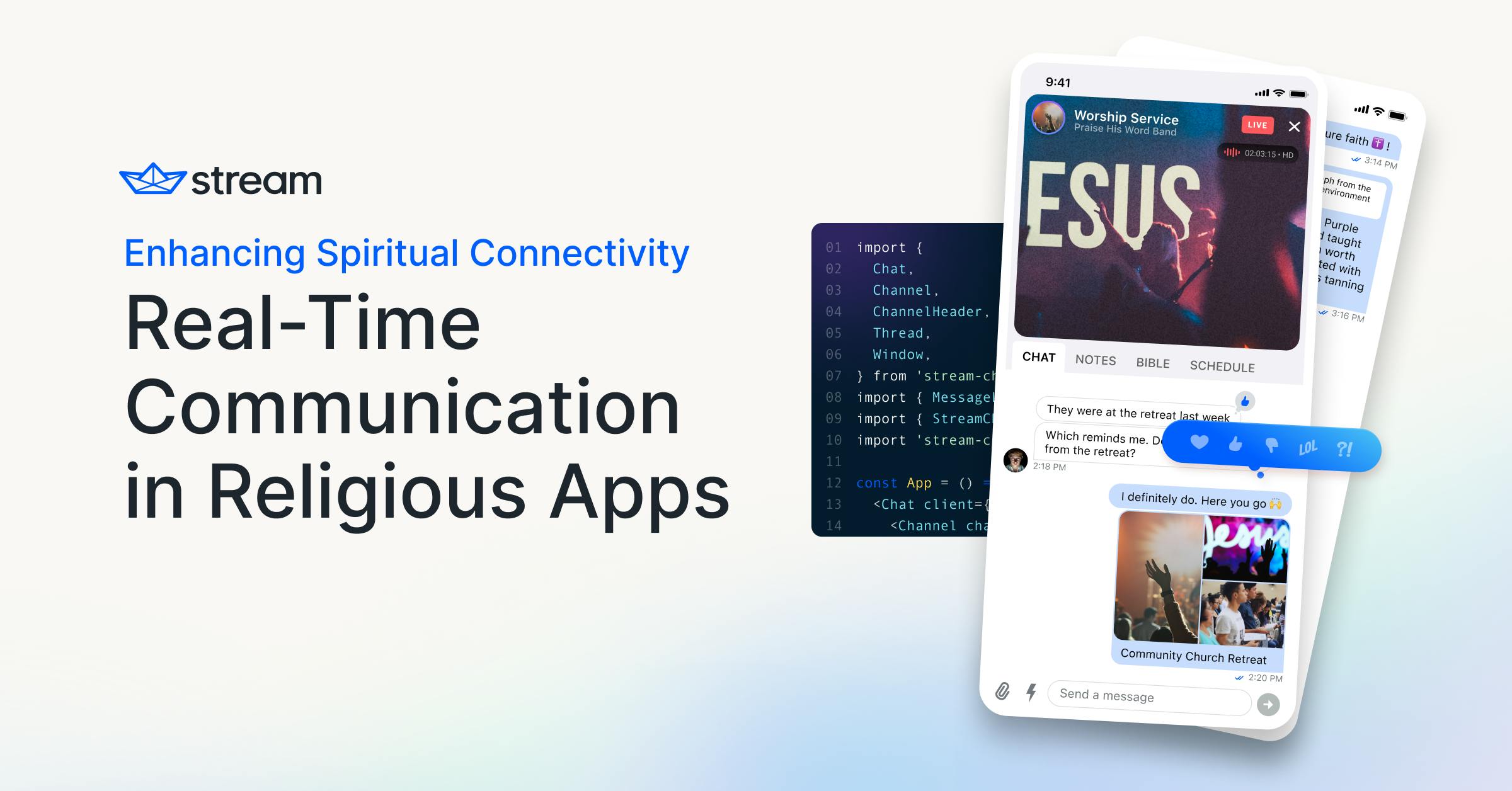In an age where technology is pivotal in shaping human interactions, religious institutions are also adapting to stay connected with their congregations. Religious institutions with vast and diverse memberships increasingly turn to mobile apps to foster spiritual growth, community engagement, and seamless communication.
However, to truly harness the power of these digital platforms, integrating real-time communication APIs for chat, video, and audio is not just a luxury but a necessity.
1. Connect Virtual Congregations
Churches often struggle to maintain a sense of community amidst their expansive memberships. With physical distances separating congregants, the need for religious apps that foster connection from anywhere becomes paramount.
Chat functionalities enable members to connect instantly, fostering a virtual unity. Whether livestreaming a service, sharing prayer requests, discussing sermon takeaways, or organizing community events, a real-time chat feature allows the congregation to bridge the gap and stay connected throughout the week.
2. Provide Personalized Pastoral Care
In a megachurch setting, pastoral care can sometimes become daunting due to the sheer number of members seeking guidance and support. Integrating a video API into the church's app can revolutionize pastoral care by offering a more personalized and immediate connection between pastors and their flock. Virtual counseling sessions over video or voice calling, mentorship programs, or even livestreamed pastoral messages can enhance congregants' emotional and spiritual well-being in real-time.
3. Enhance Worship With Live Audio Streaming
The heart of any church is its worship services, and real-time audio streaming can elevate the worship experience for on-site and remote attendees. By incorporating an audio API, the church can broadcast sermons, worship music, and special events to members who cannot attend physically. This expands the church's reach and allows for a more immersive and engaging worship experience, fostering a deeper connection with the congregation.
4. Increase Engagement With Interactive Sermons
Traditionally, sermons are delivered from the pulpit, and congregants listen passively. With real-time communication APIs, sermons can transform into dynamic and interactive experiences. Members can participate in live chat discussions, ask questions, and share insights live, creating a more engaging and inclusive atmosphere. This interactive approach not only strengthens the connection between the church leadership and the congregation but also encourages a deeper understanding and application of the teachings.
5. Strengthen Community With Virtual Event Coordination
Mega churches often organize numerous events and activities to foster community. Communication functionalities enable seamless planning and coordination of these events through the church's mobile app. Whether it's a volunteer drive, a community outreach program, or a social gathering, instant messaging, video calls, and audio announcements can streamline communication, ensuring everyone is on the same page and maximizing participation.
6. Provide Immediate Connection in Times of Need
Congregants often turn to their faith community for support in times of crisis or personal distress. Connective solutions are vital in providing immediate assistance and prayer support. Whether it's a natural disaster, a personal tragedy, or a health crisis, the church can use these tools to mobilize resources, coordinate relief efforts, and offer spiritual comfort in real-time.
Take the First Step In Building a Connected Religious App
In a world driven by technology, religious apps must adapt to their congregations' changing needs and expectations. Real-time communication solutions offer a powerful solution to enhance connectivity, foster community, and deepen the spiritual experience for members.
By integrating chat, video, and audio functionalities into their religious apps, churches can transcend physical barriers, bringing the congregation closer together to pursue shared faith and spiritual growth. As technology continues to evolve, embracing these tools becomes not just an option but a vital strategy for building and sustaining a connected spiritual community in the digital age.

